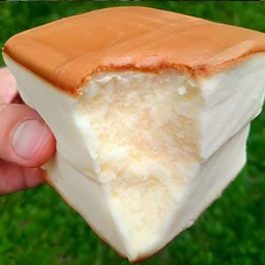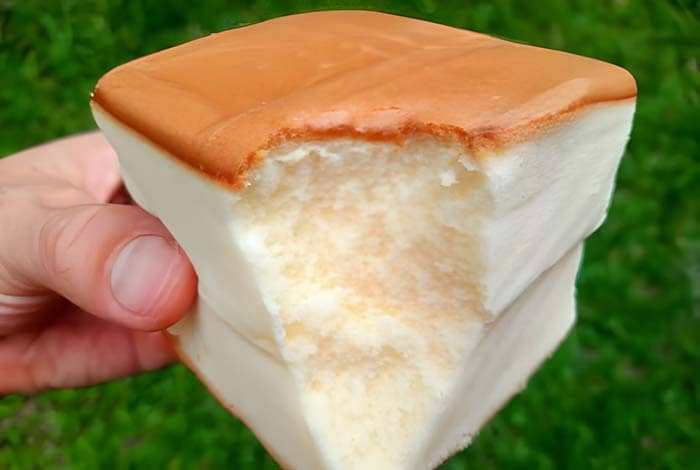Advertisement

Castella Cake recipe
This Castella Cake recipe brings you the traditional Japanese sponge cake known for its fluffy, light texture and subtly sweet flavor. It's a delightful treat that pairs perfectly with tea or coffee, making it ideal for afternoon snacks or dessert.
Equipment
- 8x8 inch square baking pan
- Parchment paper
- Electric mixer
- Mixing bowls
- Sieve or sifter
Ingredients
- 6 large eggs separated
- 1 cup 200g granulated sugar, divided
- 1 cup 120g all-purpose flour, sifted
- 1/4 cup 60ml honey, mixed with 1/4 cup (60ml) warm water
- 1 teaspoon vanilla extract optional
Instructions
Preparation:
- Preheat your oven to 325°F (160°C).
- Line the baking pan with parchment paper, ensuring it covers the sides of the pan.
Egg Yolk Mixture:
- In a large bowl, beat the egg yolks with half of the sugar (100g) until the mixture is thick and pale.
- Add the honey-water mixture and vanilla extract to the yolks, and mix well.
Egg White Meringue:
- In a separate bowl, use an electric mixer to beat the egg whites until foamy.
- Gradually add the remaining sugar (100g) while continuously beating until soft peaks form. This creates the meringue.
Combine Mixtures:
- Gently fold one-third of the meringue into the egg yolk mixture using a spatula. Repeat with the remaining meringue in two more additions. Be careful not to deflate the meringue.
Sift in Flour:
- Sift the flour over the batter in two batches, folding gently after each addition until just combined.
Baking:
- Pour the batter into the prepared pan and smooth the top.
- Tap the pan lightly on the counter to release any large air bubbles.
- Place the pan in a larger baking tray and fill the tray with hot water (about an inch deep) to create a water bath.
- Bake in the preheated oven for about 50-60 minutes, or until the cake is golden brown and a skewer inserted into the center comes out clean.
Cooling:
- Remove the cake from the oven and drop the pan from a height of about 3 inches onto the counter to prevent shrinking.
- Let the cake cool in the pan for about 10 minutes, then gently remove it from the pan and peel off the parchment paper.
- Allow the cake to cool completely on a wire rack.
Serving:
- Once cooled, slice the cake into desired sizes.
- Castella Cake is best enjoyed the day it's made but can be stored in an airtight container for up to 2 days.
Tips:
- Ensure all ingredients are at room temperature before starting.
- Be gentle when folding the meringue into the batter to maintain its airy texture.
- The water bath helps to cook the cake evenly and keep it moist.
Notes
- For best results, ensure all ingredients are at room temperature.
- The cake's texture is best when consumed within 2 days of baking.
- If the top browns too quickly, cover loosely with aluminum foil.
- The cake can be flavored with lemon zest or matcha powder for a variation.
Nutrition
Calories: 250kcal
Tried this recipe?Leave a rating & comment to let us know how it was — and don’t forget to follow us on Pinterest for more delicious recipes!

